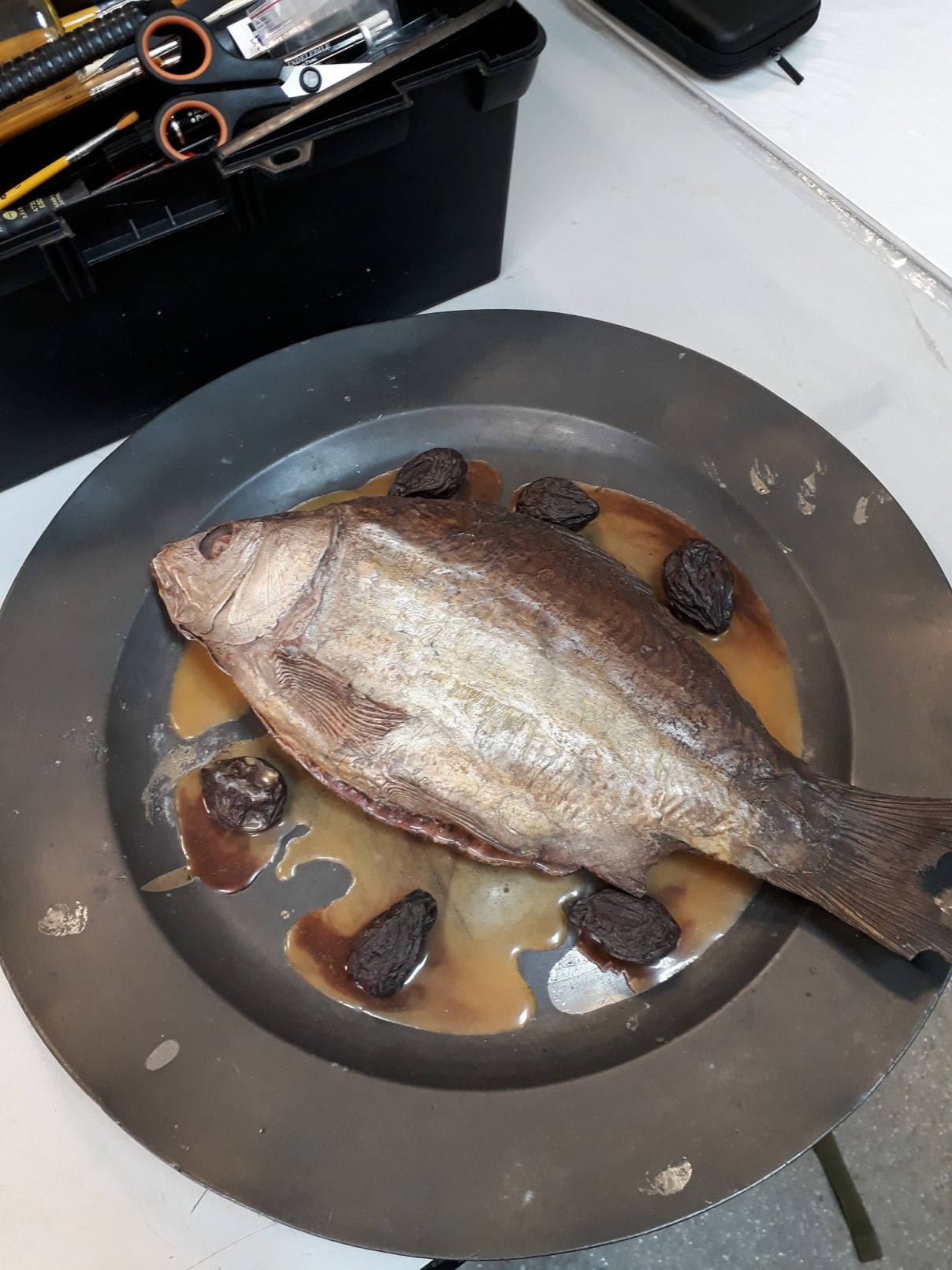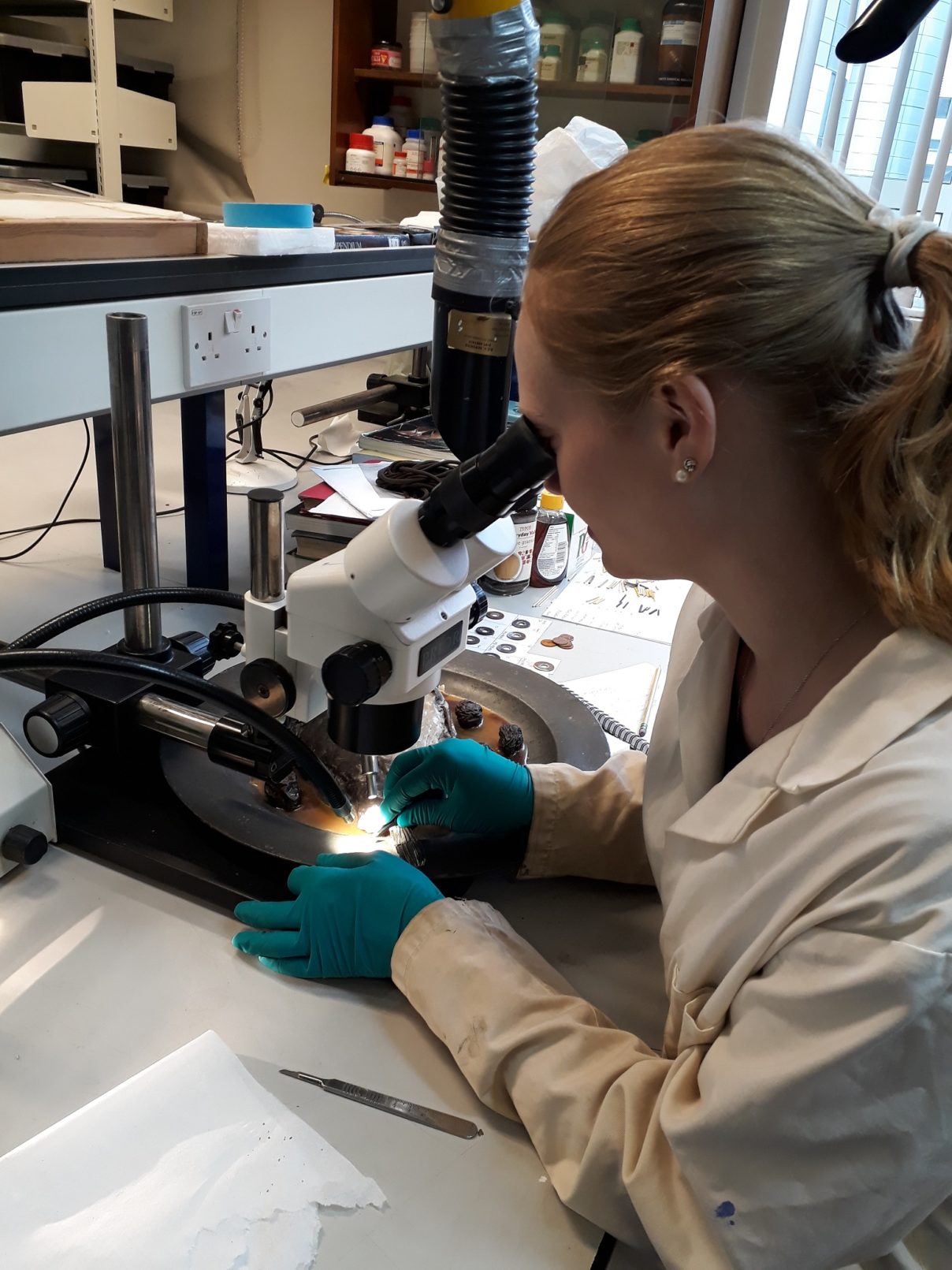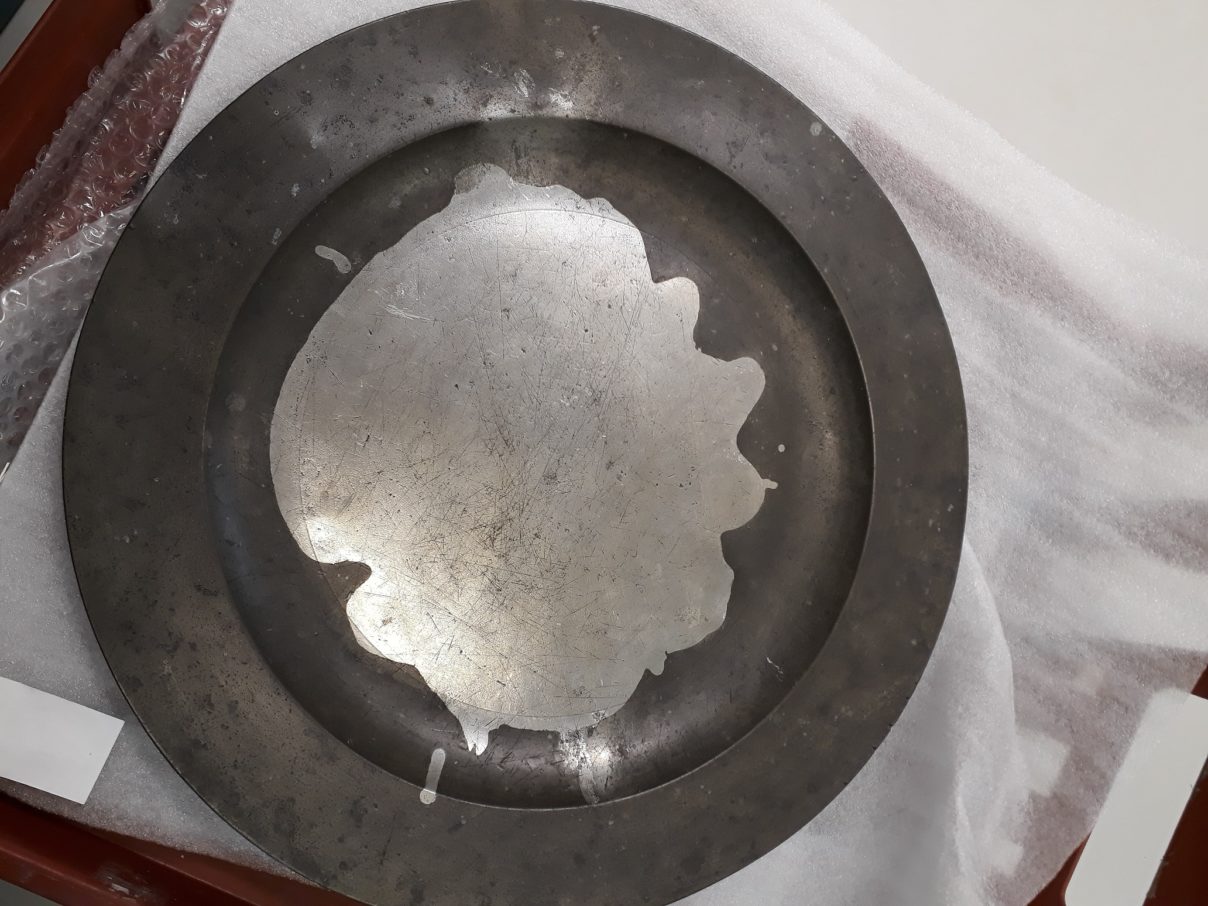Summer Group Project

We’re over halfway through the summer conservation practice module, so the students are in full swing. A good number of objects have already been completed and they’re busily working away on the remainder. During the summer module, as well as working on their own objects we usually organise a group project for them, which provides experience of working in a team. This year the challenge was to remove some artificial food from a number of pewter chasers that came from Beamish museum and will be put on future display.
Beamish had originally only asked for the artificial food to be removed, however on seeing that the surface beneath the ‘gravy’ was bright, they then asked for this bright area underneath to be tarnished to match the rest of the chasers. The students began by taking samples of the ‘gravy’ to determine what it might be and what might be used to remove it from the surface of the chasers. Unfortunately analysis proved inconclusive, however teas testing determined that the ‘gravy’ was slightly soluble in certain solvents. This allowed the students to soften this substance before starting to remove it mechanically.

When the artificial food was finally removed, the surface of the chasers was cleaned and degreased in order to remove any final traces of material. At that point the objects could be analysed in order to determine their composition and on using the portable XRF unit, they were confirmed to be made from pewter. This information would help the students when they came to re-tarnishing the bright surface in the centre where the artificial food had been.
There were several other pewter items in the conservation lab, which are part of the teaching collection and are often used for testing and experimenting. This means treatments can be tried out on these objects to see how they’ll react before applying them to museum objects. After researching various ways pewter can be tarnished, a number of chemical treatments were tested on the teaching collection pewter to see how they reacted and whether the colouration was similar to the rest of the chasers. This would help to narrow down which treatments should be tested on the chasers.

A couple of treatments seemed viable and were tested on discrete areas of the chasers to determine whether they would be suitable for use. Although one of the treatments produced a tarnish that was similar to the original, it wasn’t quite close enough and was also found to be removed far too easily with gentle cleaning. A number of other options were considered and tested but were again found to be lacking in uniformity. As such the idea of re-tarnishing the chasers was placed on hold and colleagues at Beamish museum were consulted on the issue.
After further research and discussion, a compromise was met with Beamish museum; the top of the chasers would have the tarnish removed so that the surface visible to the public would be uniform and they could then re-tarnish naturally over time. The underside of the chasers would be left untouched, which would allow a record of their original tarnished state.

The tarnish on the surface was removed using a chemical solution, applied for several minutes before being removed with solvent appropriate for use on metals. Following that a conservation grade, historic metal cleaner was used to even out the surface and create a uniform colour. This would allow visitors at Beamish to appreciate the chasers and would allow them to re-tarnish at a natural rate.
This project provided vital experience for the students of working together as part of a team, as well as helping to develop complex problem solving skills. They were able to perform intricate conservation treatments on objects, while also gaining useful research skills. As there were a number of discussions between them and colleagues at Beamish museum, they also gained experience liaising with conservation professionals.
